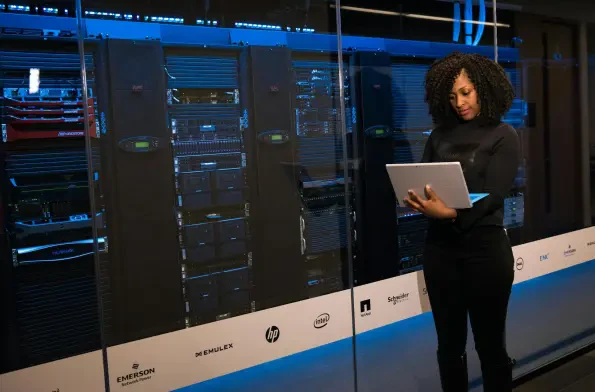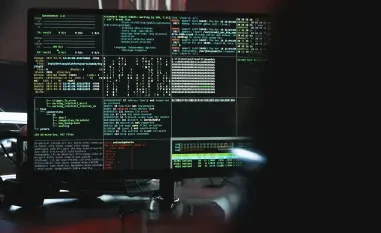In an era where digital transformation drives every aspect of business, organizations grapple with a formidable dual challenge: protecting against relentless cyber threats while adhering to an ever-expanding web of regulatory requirements. Cybersecurity has evolved far beyond basic defenses like firewalls, now demanding sophisticated strategies to counter external attacks such as ransomware and phishing, alongside internal vulnerabilities like employee errors or insider threats. Simultaneously, compliance with stringent standards like the General Data Protection Regulation (GDPR) and the Payment Card Industry Data Security Standard (PCI DSS) is non-negotiable, with severe penalties awaiting those who falter. The intersection of these two domains creates a complex landscape where a single misstep can lead to financial ruin or reputational damage. This exploration delves into the intricacies of balancing security and compliance, shedding light on strategic approaches and technological innovations that enable businesses to thrive amidst these pressures without compromising operational efficiency.
Unpacking the Modern Threat Environment
The digital battlefield has grown increasingly treacherous as cyber threats multiply in both frequency and complexity, posing significant risks to organizations of all sizes. External attacks, such as ransomware and phishing schemes, have become more advanced, often targeting vulnerabilities in software supply chains to infiltrate systems. These threats exploit human weaknesses and technical gaps, making it imperative for security teams to deploy real-time threat detection tools that can identify suspicious activities before they cause harm. Beyond these external dangers, the potential for internal breaches—whether through accidental data leaks or malicious actions by employees—adds another layer of concern. Addressing this requires a multifaceted approach, incorporating user behavior analytics to monitor and flag unusual patterns within the organization. Staying ahead of such diverse risks demands constant vigilance and a commitment to evolving defensive measures in response to an ever-shifting threat landscape.
Moreover, the sophistication of cybercriminals has reached new heights with the adoption of cutting-edge tools to execute their attacks. Technologies like artificial intelligence are now being weaponized to create highly convincing deepfake frauds or tailored phishing emails that deceive even the most cautious individuals. This escalation necessitates robust countermeasures, including strict access controls that limit who can interact with sensitive data and comprehensive incident response plans to mitigate damage when breaches occur. Security leaders must prioritize proactive strategies, ensuring that systems are fortified against both known and emerging tactics employed by attackers. The high stakes of this environment mean that complacency is not an option; organizations must continuously refine their defenses to protect critical assets from being compromised in a digital ecosystem where threats evolve at a rapid pace.
Technology: A Tool and a Threat
Innovative technologies such as artificial intelligence (AI) and machine learning (ML) have emerged as powerful allies in the fight against cyber threats and the burden of compliance. These tools enable organizations to detect anomalies in network traffic, predict potential attacks before they materialize, and automate the enforcement of security policies, significantly reducing the likelihood of human error. By processing vast amounts of data at unprecedented speeds, AI-driven systems can identify patterns that might indicate a breach, allowing for swift intervention. Additionally, automation of compliance tasks, such as generating reports for audits, saves valuable time and resources for security teams. The efficiency brought by these advancements allows businesses to focus on core operations while maintaining a strong defensive posture against digital risks.
However, the same technologies that bolster security can also be turned against organizations by malicious actors seeking to exploit them. Cybercriminals are leveraging AI to craft more sophisticated attacks, such as personalized phishing campaigns or deepfake content designed to manipulate individuals into divulging sensitive information. This dual nature of technology creates a challenging dynamic for security professionals, who must remain vigilant against the misuse of tools that they themselves rely upon. Balancing the benefits of AI and ML with the risks they introduce requires careful consideration and robust safeguards to prevent exploitation. As technology continues to advance, the cat-and-mouse game between defenders and attackers intensifies, underscoring the need for adaptive strategies that can keep pace with the innovative tactics employed by those with malicious intent.
The Weight of Regulatory Demands
Navigating the regulatory landscape presents a significant hurdle for organizations striving to maintain compliance amidst a backdrop of constant change. Standards like GDPR and PCI DSS are not static; they evolve to address new risks, requiring businesses to adapt continuously to avoid non-compliance penalties that can be financially crippling. This ongoing process demands substantial resources, as teams must monitor updates to regulations, implement necessary changes, and ensure that all practices align with legal expectations. The complexity of these mandates often overwhelms smaller organizations with limited budgets, but even large enterprises struggle to keep pace with the breadth of requirements. Compliance, therefore, becomes a relentless endeavor rather than a one-time achievement, pushing companies to seek efficient solutions to manage this burden.
Automation stands out as a critical enabler in alleviating the pressures of regulatory compliance, offering tools that streamline repetitive tasks and enhance accuracy. Automated platforms can track adherence to standards, prepare documentation for audits, and alert teams to potential violations before they escalate into costly issues. This not only reduces the risk of human oversight but also frees up personnel to concentrate on strategic security initiatives rather than manual processes. By integrating automation into compliance workflows, organizations can achieve a higher level of consistency and readiness for inspections, minimizing the likelihood of fines or reputational harm. As regulations grow more intricate, relying on technology to handle the minutiae of compliance becomes less of an option and more of a necessity for sustaining business operations in a heavily scrutinized digital world.
Building Resilience Through Strategic Approaches
One of the most effective ways to address the intertwined challenges of security and compliance is through the adoption of strategic frameworks like zero trust architecture. Operating on the principle of “never trust, always verify,” zero trust enforces stringent access controls and continuous authentication, ensuring that every user and device is validated before granting entry to sensitive systems. This approach tackles both external threats and insider risks by minimizing the attack surface and preventing unauthorized access, even from within the organization. Furthermore, zero trust aligns seamlessly with many regulatory requirements by providing detailed logs of access attempts and user activities, which are invaluable during audits. Implementing such a framework fosters a security-first mindset that is essential for resilience in a landscape fraught with digital dangers.
Complementing zero trust, scalable platforms like Kubernetes offer another layer of defense by enabling secure workload isolation across hybrid environments. These platforms support operational flexibility, allowing organizations to deploy applications securely whether on-premises or in the cloud, while maintaining consistent security policies. This adaptability is crucial for meeting compliance demands that often vary by region or industry, as it ensures that security measures remain robust regardless of infrastructure. Regular assessments of security posture, coupled with updates to these systems, help identify vulnerabilities before they can be exploited. By integrating scalable solutions with strategic frameworks, businesses can build a fortified environment capable of withstanding both current threats and future regulatory shifts, ensuring long-term stability in an unpredictable digital realm.
Exercising Caution with Emerging Innovations
While technological advancements drive progress in cybersecurity, not all innovations are immediately embraced by security leaders due to inherent uncertainties. Generative AI, for instance, holds potential for automating complex tasks and enhancing threat detection, but many remain hesitant to adopt it widely. Concerns over unproven benefits, coupled with risks such as misinformation or unintended compliance violations, lead to a preference for more established tools. This cautious approach reflects a broader trend of prioritizing reliability over novelty, especially when the regulatory landscape surrounding such technologies remains unclear. Security teams must weigh the advantages of cutting-edge solutions against potential drawbacks, ensuring that any adoption aligns with organizational goals and risk tolerance.
Beyond hesitation around specific tools, maintaining a proactive stance through continuous monitoring and regular audits is vital for adapting to both evolving threats and regulatory changes. Security assessments provide insights into weaknesses that could be exploited, while updated automation workflows ensure compliance processes remain efficient. This ongoing vigilance helps organizations stay prepared for unexpected shifts, whether in attack methodologies or legal requirements. Striking a balance between embracing innovation and exercising caution allows businesses to leverage technology’s benefits without exposing themselves to undue risk. As the digital environment continues to transform, this measured approach will be key to sustaining security and compliance over the long haul.
Forging Ahead with Practical Solutions
Reflecting on the journey through the complex terrain of cybersecurity and compliance, it becomes evident that past efforts often fell short when security and adherence to regulations were treated as separate challenges. Integrating these domains proved to be a game-changer, as unified strategies enabled organizations to address risks holistically. Looking back, the adoption of zero trust architecture and automation tools stood out as pivotal in reducing vulnerabilities and streamlining compliance tasks. To move forward, security leaders should focus on actionable steps like investing in scalable platforms for workload security and prioritizing continuous training for staff to mitigate human error. Exploring partnerships with technology providers to customize solutions for specific regulatory needs can also enhance resilience. As threats and mandates evolve, those who adapt with integrated, technology-driven approaches find themselves better equipped to safeguard their digital assets and maintain trust in an ever-changing landscape.













